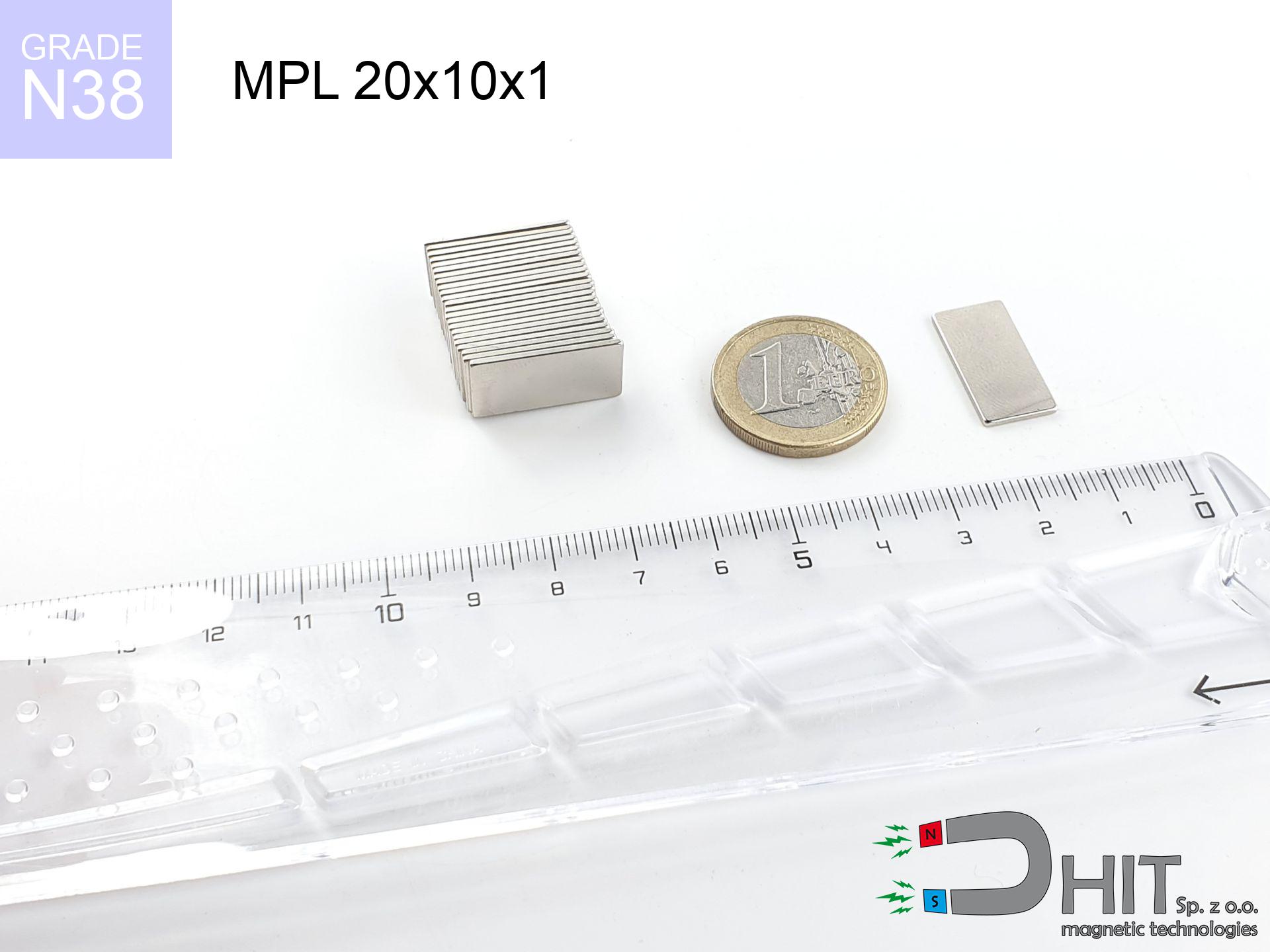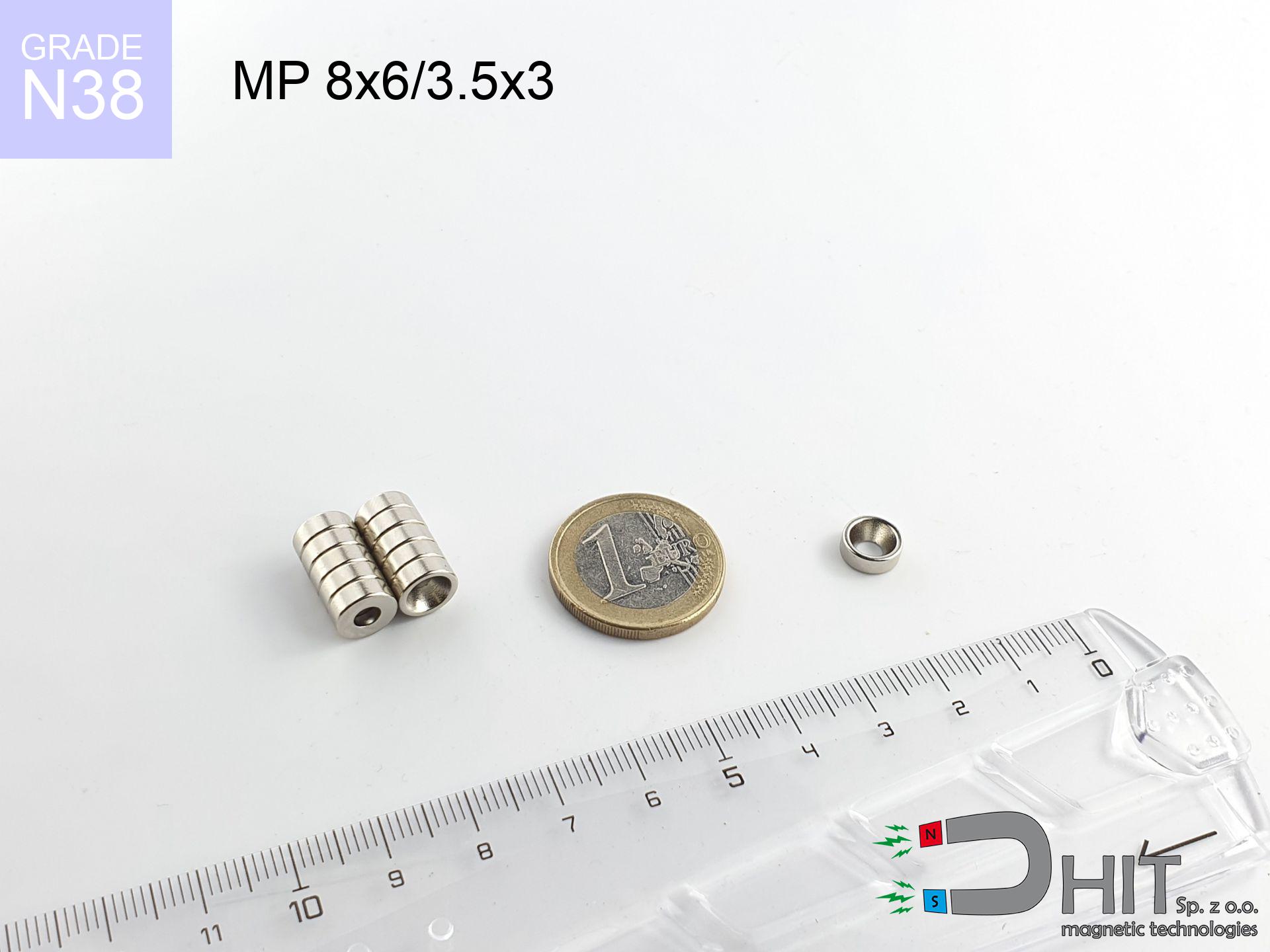UMP 65x45 [M8]x2 GW F230+ Lina / N38 - search holder
search holder
Catalog no 210386
GTIN: 5906301814054
Diameter Ø
65 mm [±1 mm]
Height
45 mm [±1 mm]
Weight
1170 g
Load capacity
230.00 kg / 2255.53 N
Coating
[NiCuNi] Nickel
Magnetic Flux
~ 6 000 Gauss [±5%]
180.00 ZŁ with VAT / pcs + price for transport
146.34 ZŁ net + 23% VAT / pcs
bulk discounts:
Need more?Need help making a decision?
Call us
+48 888 99 98 98
if you prefer let us know through
contact form
through our site.
Weight along with appearance of a neodymium magnet can be checked with our
force calculator.
Order by 14:00 and we’ll ship today!
💡 Check why professionals choose Dhit over cheap substitutes
Instead of believing fairy tales on YouTube with tests on uncertified equipment, see what really determines your magnet's power:
- 📏 Magnet thickness in the casing (min. 10mm) – This is what matters most! Thin magnets are weak. Thanks to the 1cm thickness of N52 neodymium, your magnet "sees" metal even through thick rust and mud.
- 🛡️ Armored protection (Black Epoxy) – Forget about rust. This coating doesn't chip when hitting rocks and protects the magnet in water much better than regular nickel, which fails quickly.
- 🧲 Eyelets that don't steal power – Made of special non-magnetic steel, so they don't stick to the magnet and don't block the force. Important: mount only one eyelet at a time! Using 3 at once is a mistake that weakens the magnet.
- 🧶 Certified rope (min. 8mm) – You gain the certainty that your gear won't stay at the bottom. It's thick and comfortable, so it doesn't cut your fingers when pulling out heavy scrap metal.
- 🚀 Our advantage: We are the only ones combining the strongest N52 neodymium (10mm thick) with non-magnetic eyelets. This is real power and durability you won't find anywhere else.
Invest in solid equipment and enjoy the results!
UMP 65x45 [M8]x2 GW F230+ Lina / N38 - search holder
Specification / characteristics UMP 65x45 [M8]x2 GW F230+ Lina / N38 - search holder
| properties | values |
|---|---|
| Cat. no. | 210386 |
| GTIN | 5906301814054 |
| Production/Distribution | Dhit sp. z o.o. |
| Country of origin | Poland / China / Germany |
| Customs code | 85059029 |
| Diameter Ø | 65 mm [±1 mm] |
| Height | 45 mm [±1 mm] |
| Weight | 1170 g |
| Load capacity ~ ? | 230.00 kg / 2255.53 N |
| Coating | [NiCuNi] Nickel |
| Holder Type | 2 sided |
| Material Type | Structural steel S235 (ferrous) |
| Magnetic Flux | ~ 6 000 Gauss [±5%] |
| Rope Length | 25 m |
| Rope Capacity | ~ 1595 kg |
| Rope Diameter | Ø 8 mm |
| Gloves | 1 pair |
| Size/Mount Quantity | 1xM8/2xM10 |
| Manufacturing Tolerance | ±1 mm |
Magnetic properties of material N38
| properties | values | units |
|---|---|---|
| remenance Br [Min. - Max.] ? | 12.2-12.6 | kGs |
| remenance Br [Min. - Max.] ? | 1220-1260 | T |
| coercivity bHc ? | 10.8-11.5 | kOe |
| coercivity bHc ? | 860-915 | kA/m |
| actual internal force iHc | ≥ 12 | kOe |
| actual internal force iHc | ≥ 955 | kA/m |
| energy density [Min. - Max.] ? | 36-38 | BH max MGOe |
| energy density [Min. - Max.] ? | 287-303 | BH max KJ/m |
| max. temperature ? | ≤ 80 | °C |
Physical properties of sintered neodymium magnets Nd2Fe14B at 20°C
| properties | values | units |
|---|---|---|
| Vickers hardness | ≥550 | Hv |
| Density | ≥7.4 | g/cm3 |
| Curie Temperature TC | 312 - 380 | °C |
| Curie Temperature TF | 593 - 716 | °F |
| Specific resistance | 150 | μΩ⋅Cm |
| Bending strength | 250 | Mpa |
| Compressive strength | 1000~1100 | Mpa |
| Thermal expansion parallel (∥) to orientation (M) | (3-4) x 106 | °C-1 |
| Thermal expansion perpendicular (⊥) to orientation (M) | -(1-3) x 10-6 | °C-1 |
| Young's modulus | 1.7 x 104 | kg/mm² |
Other products
Advantages and disadvantages of neodymium magnets.
Advantages
- They retain full power for almost ten years – the drop is just ~1% (according to analyses),
- They are resistant to demagnetization induced by external field influence,
- A magnet with a smooth nickel surface has an effective appearance,
- Magnets have impressive magnetic induction on the active area,
- Due to their durability and thermal resistance, neodymium magnets can operate (depending on the form) even at high temperatures reaching 230°C or more...
- Possibility of exact creating as well as adjusting to atypical needs,
- Fundamental importance in high-tech industry – they serve a role in hard drives, electric drive systems, medical equipment, also modern systems.
- Compactness – despite small sizes they generate large force, making them ideal for precision applications
Weaknesses
- To avoid cracks upon strong impacts, we recommend using special steel housings. Such a solution protects the magnet and simultaneously increases its durability.
- When exposed to high temperature, neodymium magnets experience a drop in power. Often, when the temperature exceeds 80°C, their strength decreases (depending on the size and shape of the magnet). For those who need magnets for extreme conditions, we offer [AH] versions withstanding up to 230°C
- They oxidize in a humid environment - during use outdoors we suggest using waterproof magnets e.g. in rubber, plastic
- We suggest a housing - magnetic holder, due to difficulties in creating threads inside the magnet and complex forms.
- Health risk resulting from small fragments of magnets pose a threat, when accidentally swallowed, which becomes key in the aspect of protecting the youngest. Additionally, small elements of these devices can disrupt the diagnostic process medical when they are in the body.
- High unit price – neodymium magnets are more expensive than other types of magnets (e.g. ferrite), which increases costs of application in large quantities
Lifting parameters
Maximum holding power of the magnet – what affects it?
- with the use of a yoke made of special test steel, ensuring full magnetic saturation
- with a thickness of at least 10 mm
- characterized by even structure
- under conditions of gap-free contact (metal-to-metal)
- under axial force vector (90-degree angle)
- in stable room temperature
Impact of factors on magnetic holding capacity in practice
- Gap between surfaces – even a fraction of a millimeter of separation (caused e.g. by varnish or unevenness) drastically reduces the pulling force, often by half at just 0.5 mm.
- Pull-off angle – remember that the magnet holds strongest perpendicularly. Under sliding down, the holding force drops drastically, often to levels of 20-30% of the nominal value.
- Metal thickness – thin material does not allow full use of the magnet. Part of the magnetic field passes through the material instead of converting into lifting capacity.
- Material composition – not every steel attracts identically. Alloy additives worsen the interaction with the magnet.
- Surface finish – full contact is obtained only on smooth steel. Rough texture create air cushions, weakening the magnet.
- Thermal factor – high temperature reduces pulling force. Exceeding the limit temperature can permanently damage the magnet.
Holding force was measured on a smooth steel plate of 20 mm thickness, when the force acted perpendicularly, however under shearing force the lifting capacity is smaller. In addition, even a small distance between the magnet’s surface and the plate decreases the lifting capacity.
Dust is flammable
Powder generated during grinding of magnets is flammable. Avoid drilling into magnets unless you are an expert.
Product not for children
Strictly store magnets out of reach of children. Risk of swallowing is high, and the effects of magnets connecting inside the body are fatal.
Magnetic media
Device Safety: Neodymium magnets can damage data carriers and sensitive devices (pacemakers, hearing aids, mechanical watches).
Safe operation
Before starting, check safety instructions. Sudden snapping can break the magnet or hurt your hand. Be predictive.
Warning for heart patients
Health Alert: Strong magnets can turn off heart devices and defibrillators. Do not approach if you have electronic implants.
Heat sensitivity
Watch the temperature. Heating the magnet to high heat will ruin its properties and pulling force.
Sensitization to coating
Some people have a contact allergy to Ni, which is the typical protective layer for NdFeB magnets. Prolonged contact may cause a rash. It is best to wear protective gloves.
Fragile material
Watch out for shards. Magnets can explode upon violent connection, ejecting shards into the air. Eye protection is mandatory.
GPS Danger
A powerful magnetic field disrupts the functioning of magnetometers in phones and navigation systems. Maintain magnets close to a smartphone to prevent damaging the sensors.
Pinching danger
Watch your fingers. Two large magnets will snap together instantly with a force of massive weight, crushing everything in their path. Be careful!

![Search magnet UMP 65x45 [M8]x2 GW F230+ Lina / N38 - GOLD Series Search magnet UMP 65x45 [M8]x2 GW F230+ Lina / N38 - GOLD Series](https://cdn3.dhit.pl/graphics/banners/magnet.webp)
![UMP 65x45 [M8]x2 GW F230+ Lina / N38 - search holder](https://cdn3.dhit.pl/graphics/products/ump-65x45-m8x2-gw-lina-dit.jpg)


![UI 45x13x6 [Z323] / N38 - badge holder UI 45x13x6 [Z323] / N38 - badge holder](https://cdn3.dhit.pl/graphics/products/ui45x13x6-z323-fap.jpg)


